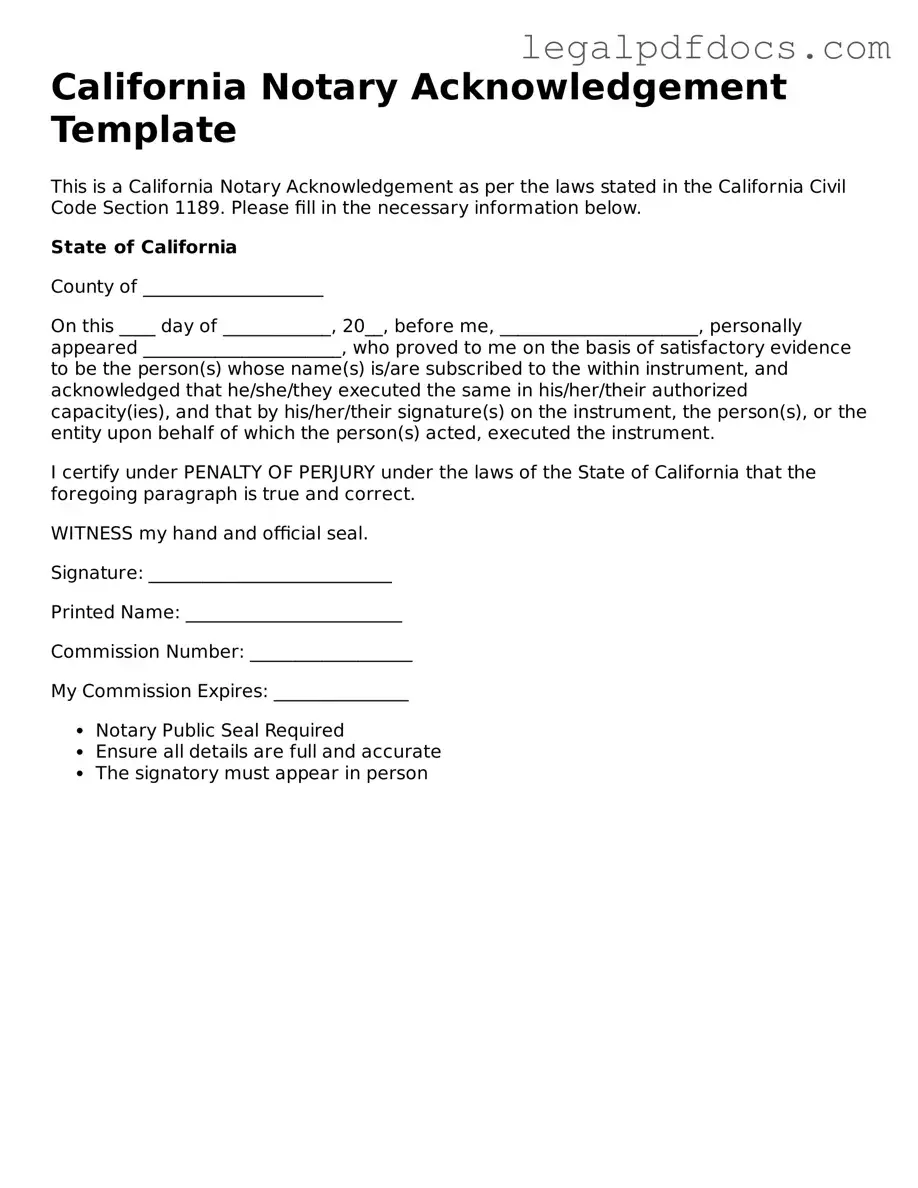Official Notary Acknowledgement Form for California
The California Notary Acknowledgement form is a legal document used to verify the identity of individuals signing a document. This form provides assurance that the signer appeared before a notary public and acknowledged their signature willingly. Understanding its importance can help ensure that your documents are properly executed and recognized.
Ready to fill out the California Notary Acknowledgement form? Click the button below to get started.
Open Notary Acknowledgement Editor Here
